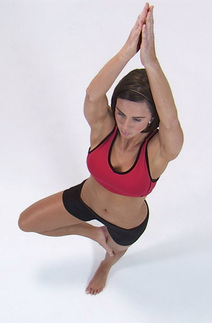Guest Blog Post by Laura Rock

Picture the archetypal yoga instructor: serene; uncompetitive; wearing lululemon; erect posture. In short, the anti-writer. If this were a classroom exercise on character development, that’s how we’d describe her, at least initially, before moving beyond archetypes and maybe changing her gender. And our nascent “writer?” Cranky; score-keeping; unshowered; wearing sweatpants from high school, threadbare at the butt; hunched.
But this isn’t a writing exercise, so let’s relax, all together—you, me and every other slope-shouldered scribbler staring at the screen. Return to the breath. Inhale and hold for a count of eight…eight reasons a yoga practice will enhance your writing practice.
But this isn’t a writing exercise, so let’s relax, all together—you, me and every other slope-shouldered scribbler staring at the screen. Return to the breath. Inhale and hold for a count of eight…eight reasons a yoga practice will enhance your writing practice.
- Yogi’s Choice: There’s no striving in yoga, no prizes. You can’t win at yoga class. The instructor demonstrates asanas, or poses, but students decide how hard to push themselves depending on the energy/balance/desire of the moment. It’s liberating to let go of expectations. Opting for a less challenging asana doesn’t make you a failure any more than abandoning your (unrealistic?) word-count target does. Writer’s Choice: work on the part of the story that floods the page. If the words won’t come, quit early—you’ll be back tomorrow.
- Ritual: Some people dismiss yoga as slow and boring, but it’s precisely the repetitive, meditative quality that benefits writers. Following a set pattern of movement leads, paradoxically, to variation. Routine (substitute discipline here if you like) yields discovery. Ideas stipple the unthinking stillness, ideas that may find their way into a poem or story. Whether or not that happens, ritual is its own reward. Repeated engagement with your writing builds a base camp for the expedition to the unknown.
- Strength and Ease: Yoga practitioners are invited to find in the asanas both strength and ease, a tension that provides excellent training for wordsmiths. Holding a thing and its contradiction in your mind is an essential position for writers.
- Allowing: Yoga teachers ask their classes to observe, and allow, what’s happening internally. The goal is compassionate awareness, not forcing the body into a shape (hello, handstand) it’s not ready to take. This applies to manuscripts as well. Cultivate compassionate awareness of your outlines, spreadsheets and tortured drafts. Allow them to find their shape. And remember that sometimes allowing means shredding.
- Pace: In yoga there’s a time to flow from asana to asana, a time for speedier transitions such as hops and jumps, and a time to hold. The same is true in your novel.
- Quiet Togetherness: What other activity provides so much solitude in a crowd? You’ve chosen to work with words instead of people for a reason. Yoga is perfect for introverts.
- Physical Restoration: Aching lower back? Frozen neck? Seized thoracic region or tight hamstrings? A yoga practice counters the occupational hazards of writing and restores you to your pages.
- Vivid Imagery: At first the names of the poses might seem strange, the poetic patter of some instructors laughable. That’s okay, smirk—no one wants to deprive you of your critical faculties, but over time, connections to the writing life emerge. Postural attitudes can inform texts, increasing creative flexibility: you can be the happy baby, the cobra, the cat or the cow. Standing in tree pose, find balance, wave your branches, bend. Try fallen tree—the same pose lying down—and feel that you are the fallen tree on the forest floor, perhaps atoning for all that paper you burn through as a writer. Inverted poses like downward dog and forward bend, in which the head drops below the heart, will, as one of my favorite teachers put it, “let thoughts that no longer serve you fall out.” And at the end of yoga class, you get to enter the final relaxation known as savasana, or corpse pose. Having trouble relaxing into death? Just think of all the rejections.

Laura Rock’s fiction and essays have appeared in Canadian and Irish publications, winning several awards. She lives in Lakefield, Ontario, where she teaches, writes and attends yoga class whenever she can.
Follow her on Twitter: @laurairock
Follow her on Twitter: @laurairock



 RSS Feed
RSS Feed

